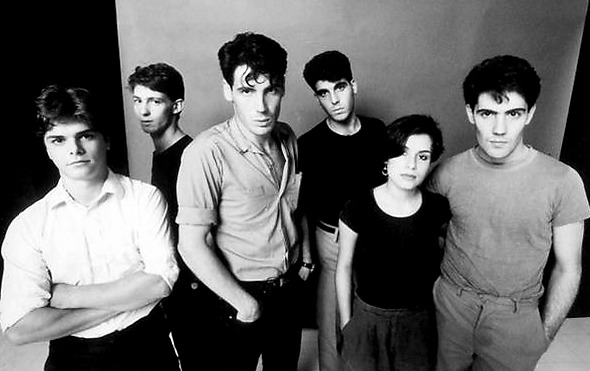Chances are, you’re aware of the music scene in 1970s New York City.
You’re likely aware of the rise of punk rock, new wave, and hip-hop that marked the city with critical attention. You may even know about no wave, a vital development that quietly influenced scores of artists working across genres for generations to come.
However, you may or may not be aware of one New York band who slipped under the radar of the national spotlight, and unfortunately, many of the history articles that have saturated the realm of music journalism: Polyrock.
Formed in New York in 1978 and led by frontman/guitarist Billy Robertson, Polyrock was arguably one of the first bands (at least on this side of the Atlantic) to introduce a pattern-based, sharply-angled take on the guitar music of the time, and to capitalize on the sensibilities which would soon become commonplace in the artier side of the growing post-punk and new wave movements.
However, a crucial component to the alluring story of this band is the fact that they had excellent help: production and composition assistance from none other than minimalism pioneer Philip Glass. In fact, Glass appears as a musician on their first two albums.
The influence of Glass’s school of minimalism is evident, as the repetitive motions of Polyrock’s music create a hypnotic atmosphere not dissimilar from the music in Glass’s own catalog. Evidence of Krautrock influence is also present; you can hear rhythms and sonic ideas initiated by CAN or Faust throughout Polyrock’s work, making them one of the first bands to draw these influences into the growing indie rock landscape.
The captivating layering of minimalism and rock is truly sublime, and extremely ahead of its era; similar moments and musical quotations have popped up in music decades later, in bands such as Stereolab or Osees.
Polyrock’s debut self-titled 1980 LP, though somewhat inflexible at times, nonetheless presents a worldly, justifiable cohesion found in similar projects of the era.
The chaos is vivid, and the noise is visceral; however, the rhythms are nearly club-ready, and the motorik drumming cuts through the auditory clutter like a hot knife. The fun, sharp beats pull you down into songs you may otherwise feel lost or overwhelmed in.
Polyrock is, of course, not the only group of their era to play around with this dichotomy. While often compared to New York scene brethren Talking Heads, a more apt comparison to the deeply neurotic, rigid grooves would be DEVO, or perhaps Suburban Lawns.
Their second album, “Changing Hearts”, was released in 1981 and provides a very similar backbone, with slightly diluted experimentalism. it still takes into account the lessons learned from the first Glass collaboration, but manages to successfully branch out and tone down thoughtfully. The danceable grooves remain, and the band’s formula is not left behind. However, slight moves are taken to improve the accessibility of the work; fortunately, it is apparent that these moves are not to the detriment of the album’s creative value.
For a low-key sophomore effort, it’s pleasantly surprising, and just as interesting as the band’s debut.
Polyrock was met with critical acclaim, and over time, their artistic space has become more and more revisited. However, as angular art rock pioneers, and considering their early toe-dipping into minimalism, they deserve vastly more credit for their work than they’ve received.
Watch the video for “Romantic Me” here.

